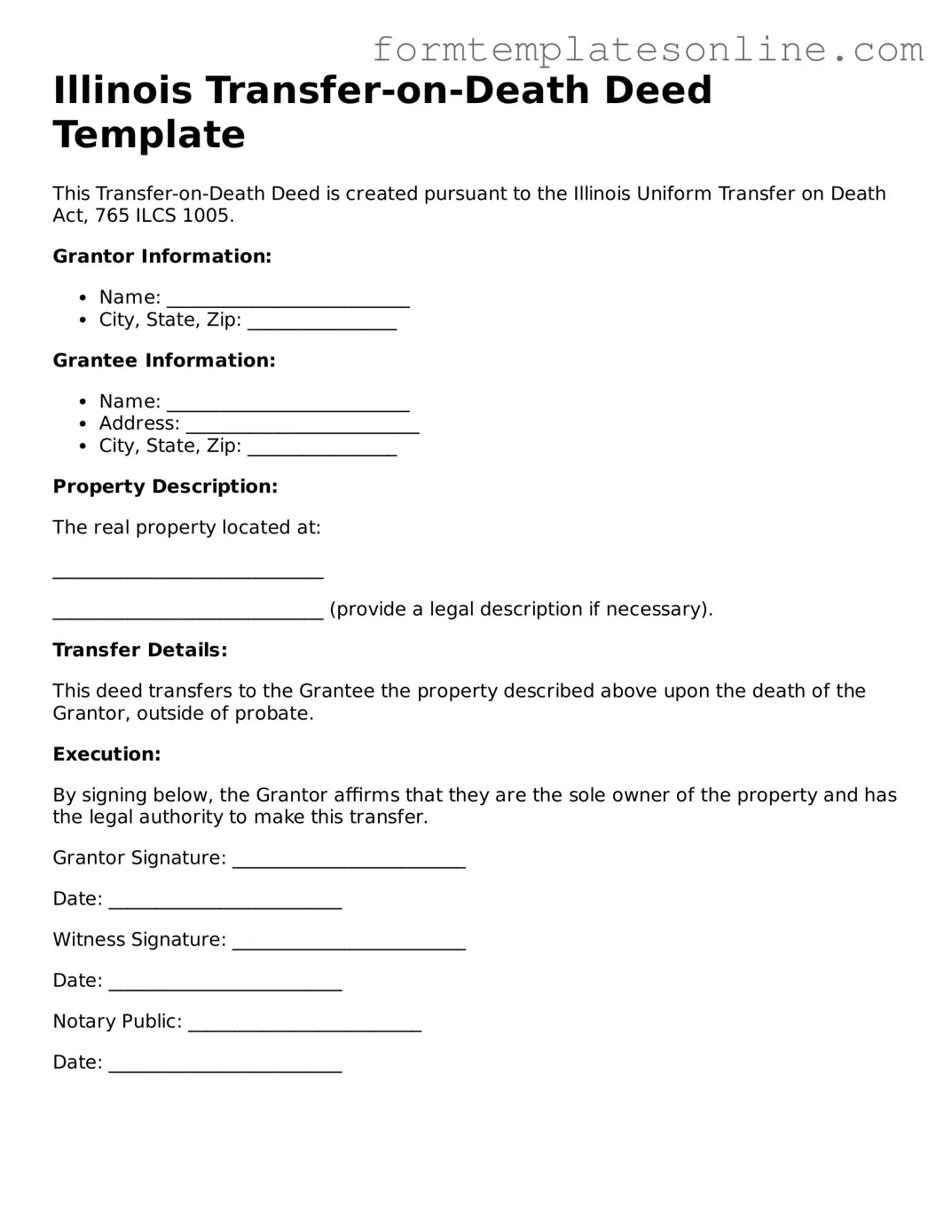What is a Transfer-on-Death Deed in Illinois?
A Transfer-on-Death Deed (TOD Deed) allows property owners in Illinois to transfer their real estate to a designated beneficiary upon their death. This deed is a simple way to ensure that your property passes directly to your chosen heirs without going through probate, which can be a lengthy and costly process.
How do I create a Transfer-on-Death Deed?
To create a TOD Deed, you must fill out the appropriate form, which can be obtained from the Illinois Secretary of State's website or local county recorder's office. You will need to provide details about the property, the beneficiary, and your signature. It's important to have the deed notarized to ensure its validity. Once completed, the deed must be recorded with the county recorder's office where the property is located.
Can I change the beneficiary after creating a Transfer-on-Death Deed?
Yes, you can change the beneficiary at any time. To do this, you must create a new Transfer-on-Death Deed that names the new beneficiary and record it with the county. Additionally, you can revoke the existing deed entirely if you no longer wish for that beneficiary to inherit the property.
What happens if the beneficiary predeceases me?
If the designated beneficiary passes away before you do, the property will not automatically transfer to them. Instead, the property will become part of your estate and will be distributed according to your will or, if you do not have a will, according to Illinois intestacy laws. It’s wise to name an alternate beneficiary to avoid complications.
Is a Transfer-on-Death Deed subject to creditors’ claims?
Yes, a Transfer-on-Death Deed does not protect the property from creditors. If you have outstanding debts, creditors may still make claims against the property during your lifetime or after your death. The property may be subject to claims before it is transferred to the beneficiary.
Do I need an attorney to create a Transfer-on-Death Deed?
While it is not legally required to have an attorney assist you in creating a TOD Deed, it is highly recommended. An attorney can help ensure that the deed is filled out correctly and meets all legal requirements. This can prevent potential disputes or issues down the line.
Can I use a Transfer-on-Death Deed for all types of property?
A Transfer-on-Death Deed can only be used for residential real estate in Illinois. This includes single-family homes, condominiums, and multi-family properties. However, it cannot be used for commercial properties, personal property, or vehicles. Always consult local laws or an attorney for specific guidance on your situation.
